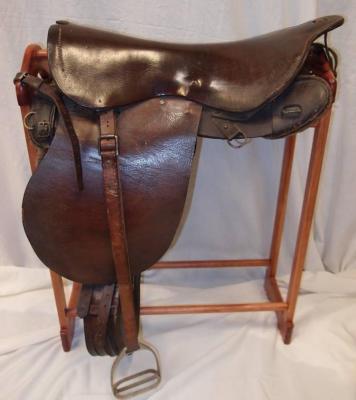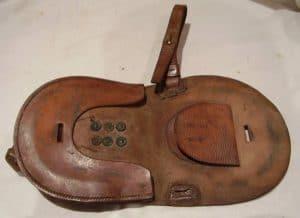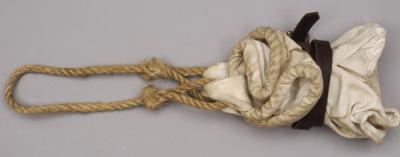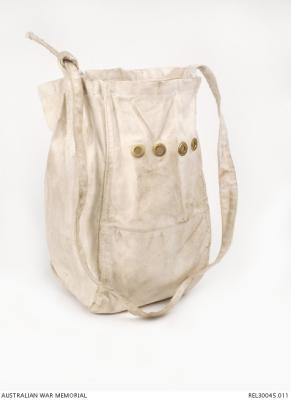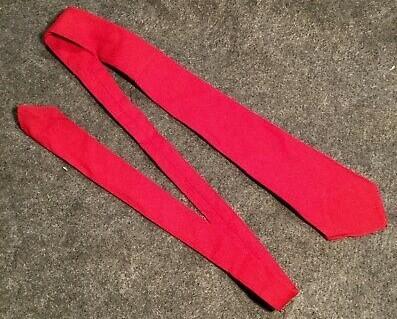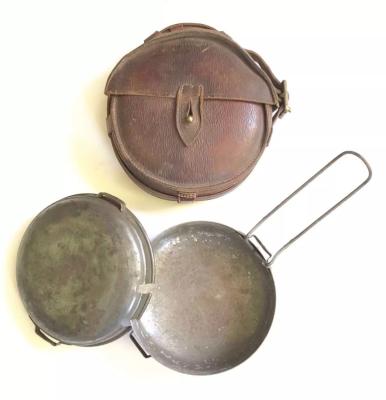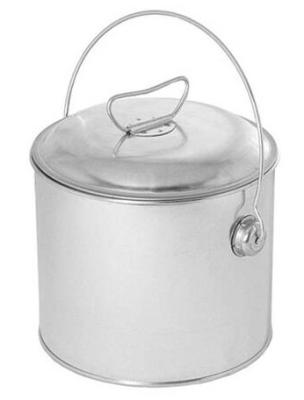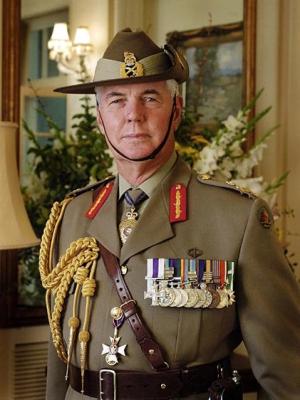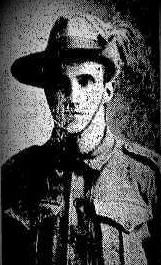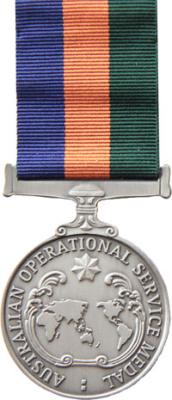1903 Pattern Bandoliers
Two types of the Pattern 1903 are found – one with 5 pouches and the other with 9, The pouches are designed to hold 10 rounds of .303 calibre ammunition in two chargers. The pouches and the strap on which they are fastened is made of brown leather. The bandolier was worn over the left shoulder.
A small internal guard strap prevents the second charger from falling out when the first has been removed. Both the strap and the pouch flap are secured to a brass post on the front of the body of the pouch. The pouches are attached to a curved strap, designed to fit the shape of the wearer's shoulder, by means of four copper rivets per pouch. The strap, which is partially voided behind each row of pouches, is cut in two pieces and is joined by three rivets behind the fifth pouch on the front. The section of strap which passes around the back of the wearer can be adjusted for length at the left side waist by means of a brass buckle.
The 50 round bandolier was the normal infantry issue and could be supplemented with cloth bandoliers when additional ammunition was needed for operations. Mounted troops, particularly Light Horse were issued the 9 pouch version. Although the 50 round (five pouch) bandolier of the 1903 pattern bandolier equipment carried a steadying strap to prevent the bandolier slipping, this was not used on the 90 round (nine pouch) bandolier which had to be quickly pulled around the body to give access to ammunition carried on the wearer's back. Light Horse troopers often fitted a 9 pocket bandolier around their mount's neck when resupply difficulties were anticipated.
After extensive operational use during World War 1, the bandolier became a distinctive adjunct to military dress in the inter-war period in a ceremonial fashion.
Details
Details
Bandoliers are usually found bearing Ordnance and maker's marks and a year date. Two versions of each type of bandolier exist. The first, Mark I version, featured a double buckle fastening. The Mark II substituted a triangle and single buckle in place of the original double buckle. The end of the loop formed by the strap and buckle bears a brass triangle. The opposing end of the bandolier has a single brass buckle. Attached to this, with four rivets, is a leather strap which is passes through the brass triangle and is looped back to the buckle.
Australian Army Museum of Western Australia
Australian Army Museum of Western Australia
Other items from Australian Army Museum of Western Australia
- World War 1, 1912 Universal Pattern Saddle
- World War 1, 1912 Universal Pattern Saddle - Equipage - Horse Shoe Carrier
- World War 1, 1912 Universal Pattern Saddle - Equipage - Canvas Water Bucket
- World War 1, 1912 Universal Pattern Saddle - Equipage - Saddle Wallets
- World War 1, 1912 Universal Pattern Saddle Equipage - Fodder Bag
- World War 1, Red Necktie of Convalescent Blue Uniform
- World War 1, 1912 Universal Pattern Saddle Equipage - Circular Mess Tin or Dixie
- WORLD WAR 1 MESS TIN OR DIXIE - D SHAPED
- Anzac Christmas Billie 1915
- Governor General's Military Uniform
- World War 1, Australia, Western Australia, 250 CARLSON, 10 Light Horse
- Australian Operational Service Medal - Border Force


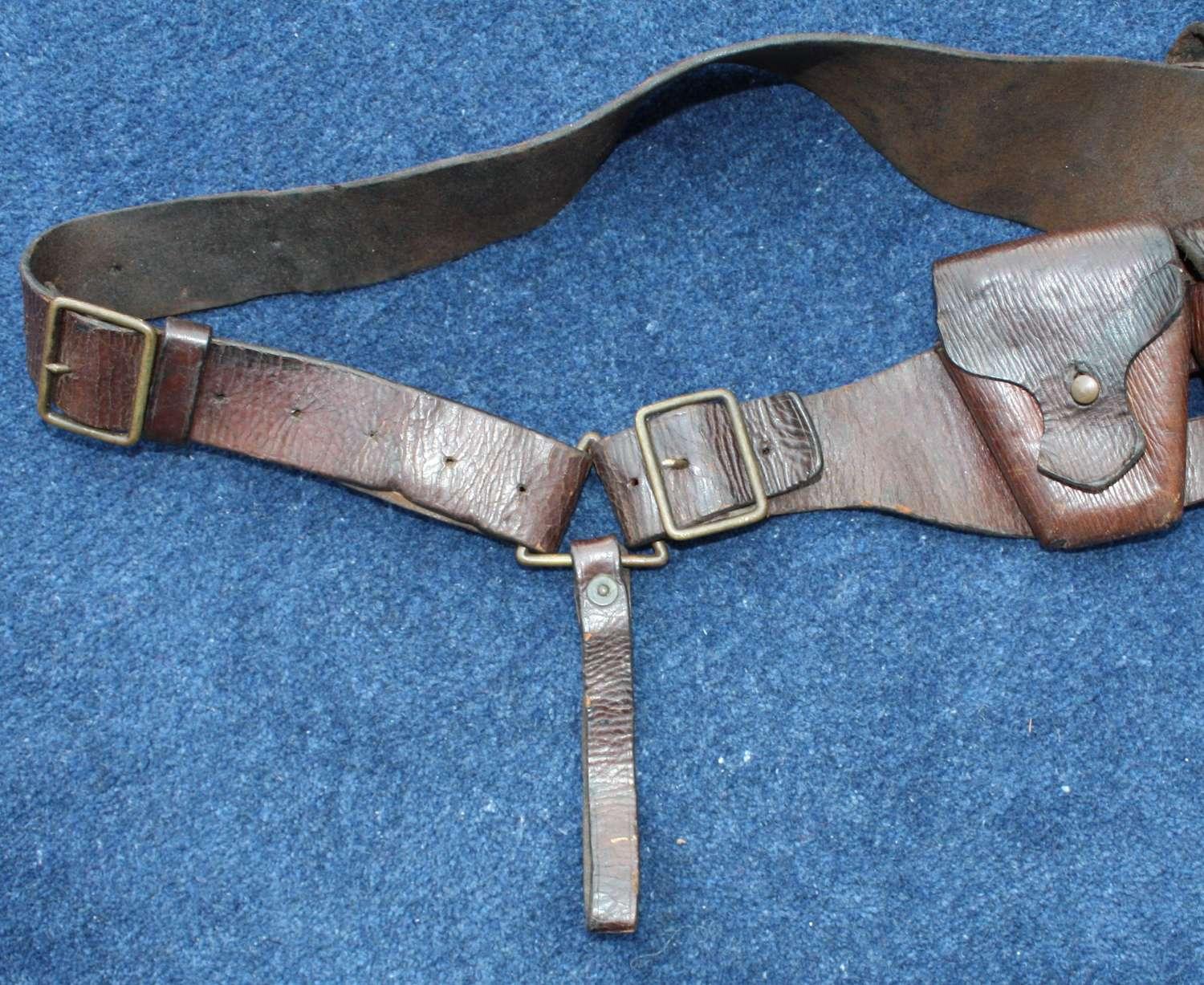
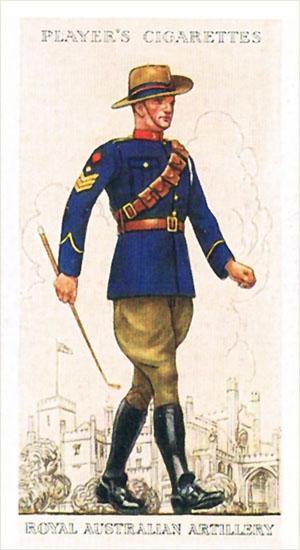
Scan this QR code to open this page on your phone ->

